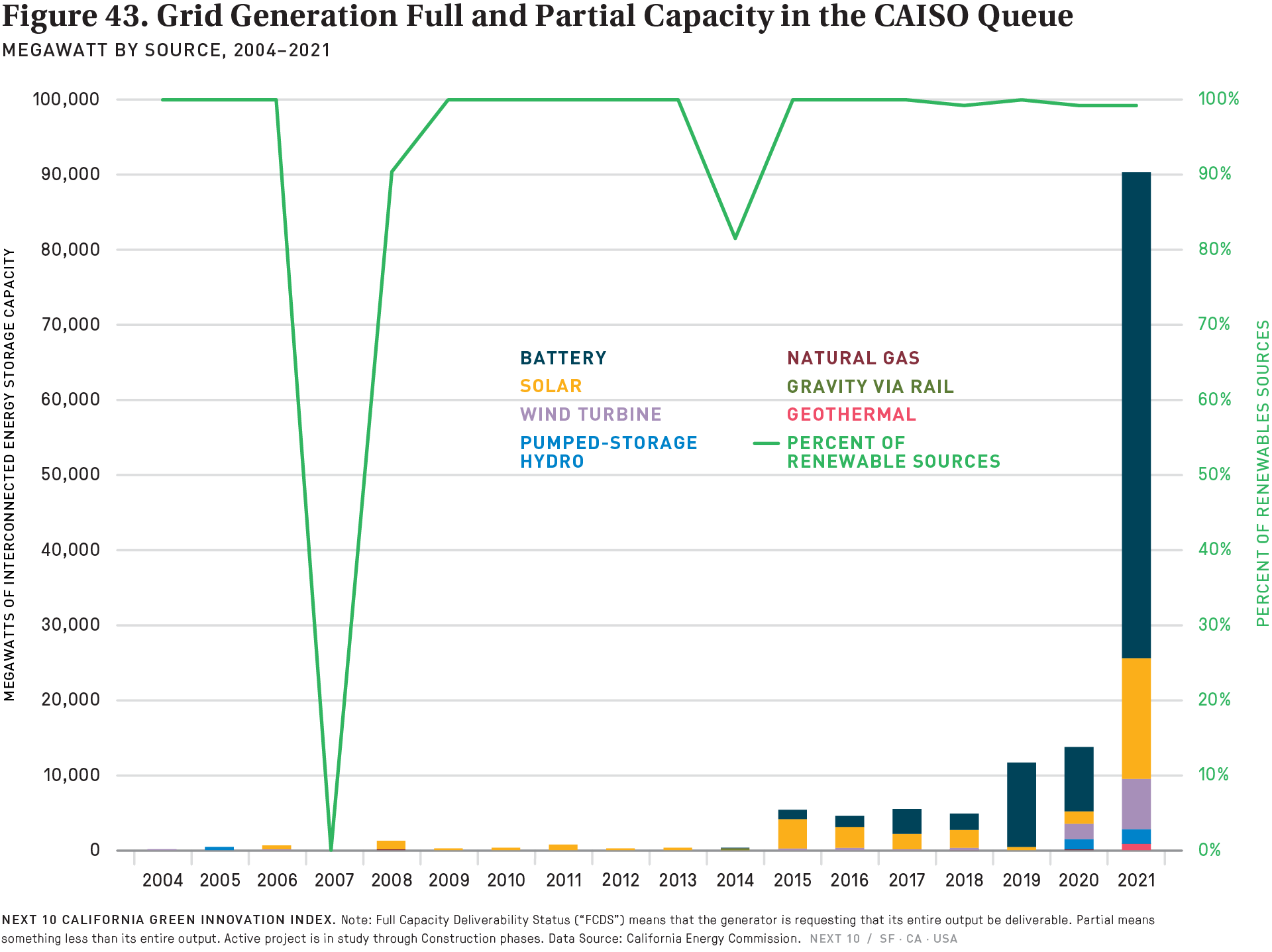Highlight
- The California battery storage industry proliferated in 2021. In 2021, the cumulative interconnected battery storage increased by 7.5 times over the previous year, with approximately (fully and partially interconnected) 64,693 megawatts (MW) of energy storage interconnected to the grid—a record high since 2005. California had the most utility-scale batteries added to the grid in the U.S., reaching 2,359 MW as of 2021, according to the CAISO interconnection records. Building on the momentum, California has also diversified its energy storage resource type portfolio. Under California’s landmark 2019 energy storage procurement mandate (AB 1144),162 investor-owned utilities have already surpassed the 2024 procurement target of 1,325 MW installed energy storage capacity MW by 78 percent.
162 “AB-1144: energy storage systems.” California State Legislature. Chaptered September 1, 2021. Available at: https://leginfo.legislature.ca.gov/faces/billVotesClient.xhtml?bill_id=202120220AB1144.
Challenge
- Solar PV and battery storage dominate the growth share by 73.3 percent and 18.8 percent, respectively. The current Solar Investment Tax Credit (ITC) requires the battery system to be charged more than 75 percent of the time by the solar facility for an entire year to be eligible for tax benefits. The California Independent System Operator (CAISO) has been building battery storage to meet future GHG reduction needs, which is crucial to providing operational flexibility and addressing demand shortfall. CAISO still has a ways to go to ensuring it can substantially produce adequate levels of resources, in the long run, to meet the 15 GW energy storage target by 2032. Moreover, according to Vistra, there is a growing concern that any resulting volume of CAISO Interim deliverability would remain small and that the deliverability would only be temporary.163
163 Vistra at 10-12. The CAISO tariff defines Deliverability in relevant part as “[t]he annual Net Qualifying Capacity of a Generating Facility, as verified through a Deliverability Assessment and measured in MW, which specifies the amount of resource adequacy capacity the Generating Facility is eligible to provide.” Tariff appendix A, existing definition of “Deliverability.”
Opportunity
- Energy Vault has planned a 10 MW (20 MWh) battery energy storage system for Jupiter Power in that will participate in the CAISO Resource Adequacy program, to help relieve grid strain.164 California had only 256 MW of utility-scale batteries before 2020, but had reached 1.8 GW by the end of 2021—an eight time increase in the battery storage installations.165
164 Utility Dive. Energy Vault, Jupiter Power enter contracts for storage projects totaling 220 MWh in California and Texas. August 16, 2022. Retrieved from: https://www.utilitydive.com/news/energy-vault-jupiter-power-storage-tax-california/629793
165 American Clean Power Association. Clean Power Quarterly. 2021 Q3. Retrieved from: https://cleanpower.org/wp-content/uploads/2021/10/CPQ_3Q21_PUBLIC-1.pdf

